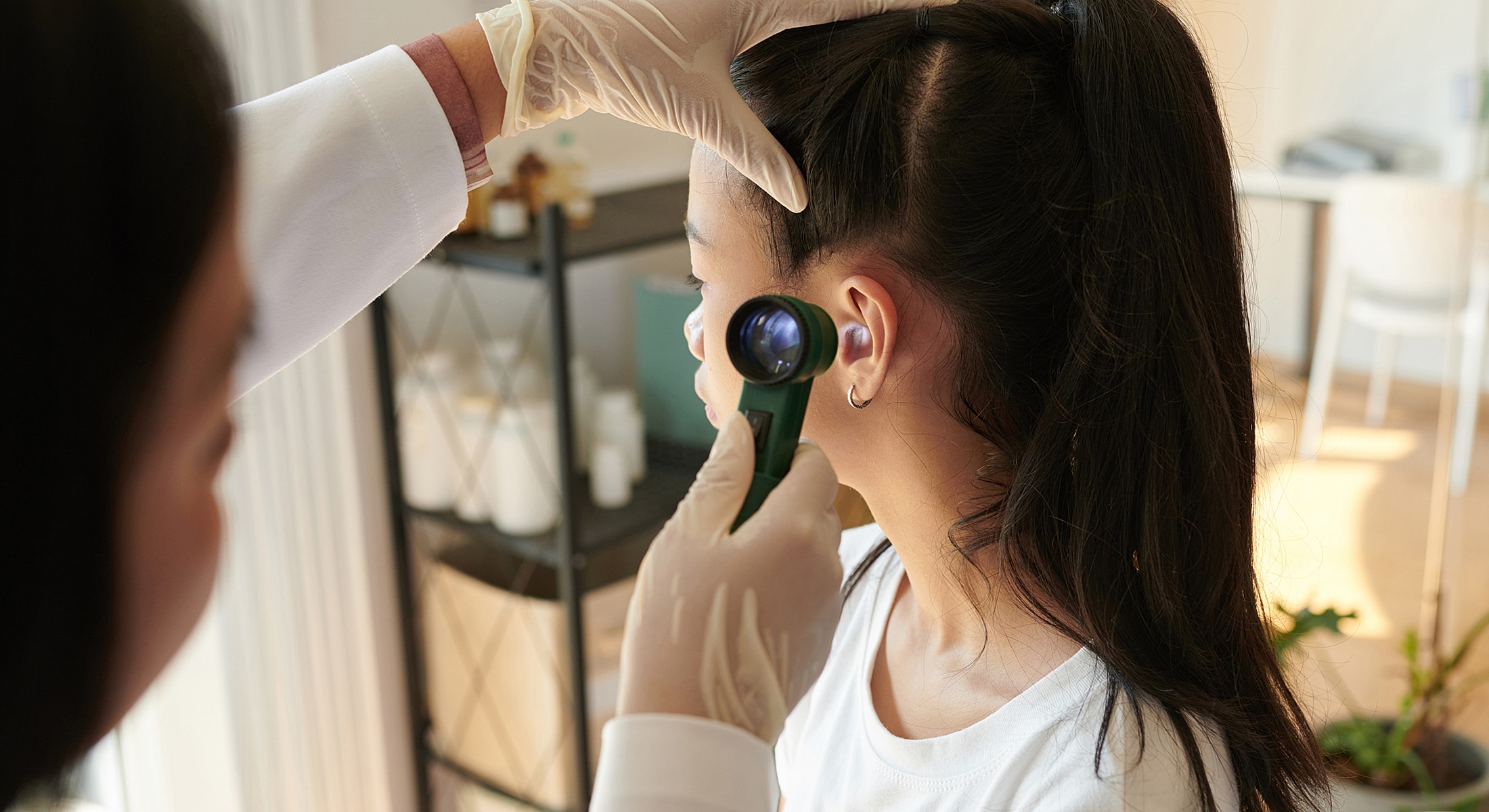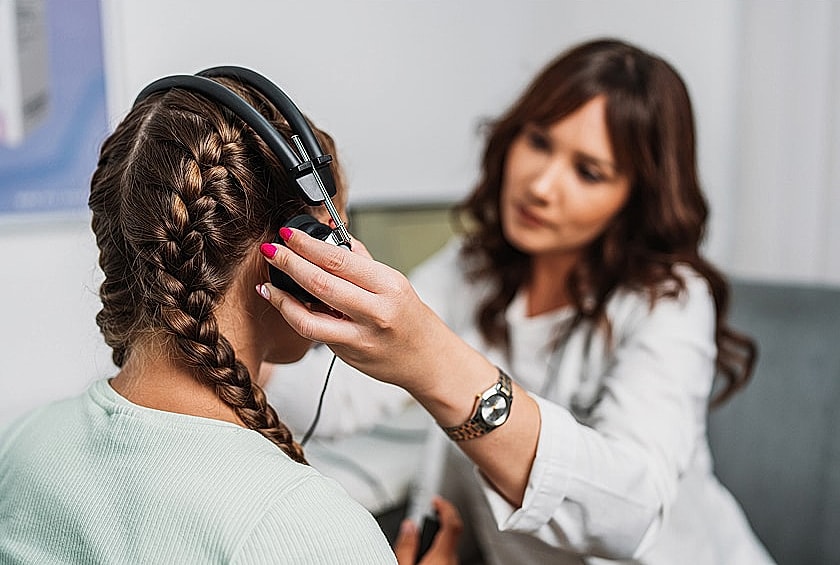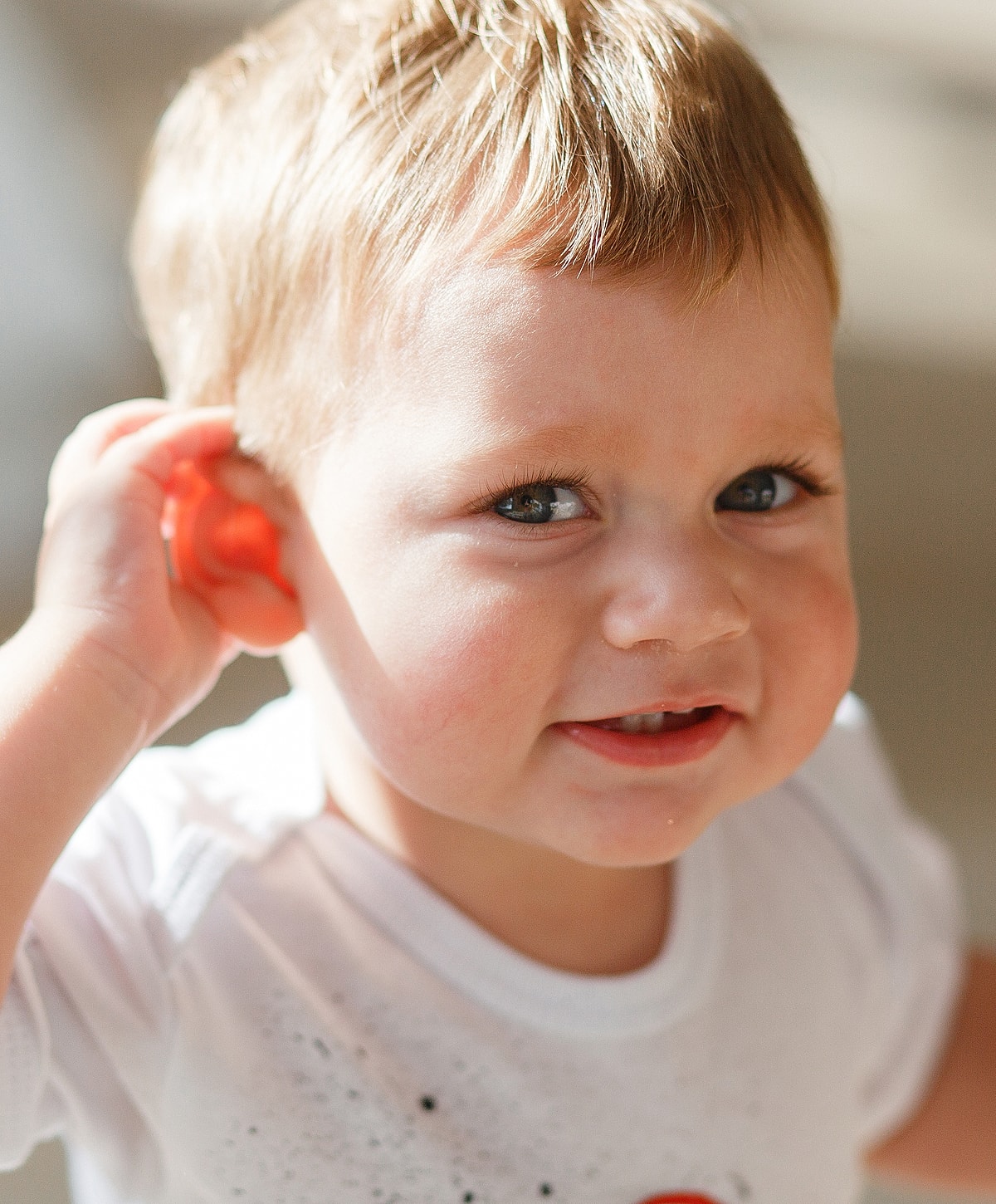SoCal ENT provides advanced ear infection treatment to relieve pain, prevent complications, and restore ear health for children and adults.

















Ear infections are among the most frequent health issues in children, often leading to ear pain, temporary hearing loss, and repeated bouts of discomfort.
At SoCal ENT in Palm Springs, our experienced team delivers thorough and compassionate care for both children and adults facing acute or chronic ear infections. If your child experiences ongoing infections, we offer advanced diagnostic tools and effective treatments to relieve symptoms and protect long-term ear health.





An ear infection, known medically as otitis media, happens when fluid collects in the middle ear and triggers inflammation, pain, and in some cases, temporary hearing loss. The middle ear sits just behind the eardrum and connects to the back of the nasal cavity via the eustachian tubes. These narrow tubes regulate pressure and allow fluid to drain properly, but when they become blocked by infection, allergies, or sinus congestion, fluid can build up and create an ideal environment for germs to grow.
Ear infections are typically categorized into three types:
Children are particularly susceptible to ear infections because their eustachian tubes are shorter and less efficient at draining, making fluid buildup more likely.
The following factors can contribute to frequent childhood ear infections:
Viral or bacterial infections can spread into the middle ear.
Allergy-caused inflammation can block the eustachian tubes.
Swollen adenoids may trap bacteria, causing frequent infections.
Children's smaller eustachian tubes are more prone to developing blockages.
Exposure to second-hand smoke increases the risk of inflammation and infections.
Bottle-feeding infants while they are reclined can cause fluid to enter the eustachian tubes.
Ear infections in children can cause mild to severe discomfort. The symptoms can vary based on the child's age.
Common Signs of Ear Infections in Children:
If symptoms of an ear infection continue for more than a few days, it's important to seek medical evaluation, which can prevent the risk of complications like damage to the eardrum or hearing loss.

To address bacterial ear infections, your doctor might suggest antibiotics to clear the infection and alleviate discomfort. Additionally, they could recommend pain relief methods like over-the-counter painkillers or ear drops to help manage symptoms.
For children who frequently suffer from ear infections or ongoing fluid retention, ear tube insertion offers lasting relief. Tiny tubes are placed in the eardrum to enable drainage and stop fluid buildup. This minimally invasive outpatient procedure allows for a swift recovery while lowering the likelihood of future infections and enhancing hearing clarity.
Children experiencing frequent ear infections because of enlarged adenoids may benefit from adenoid removal, which can decrease the frequency of infections by limiting bacterial accumulation.
Eustachian tube dilation is a solution for older children who experience ongoing ear pressure and drainage problems. This procedure clears the obstructed passage, enhancing fluid drainage and reducing the risk of infections.
Addressing underlying issues such as allergies and persistent sinus problems can minimize ear infections linked to inflammation and fluid accumulation. Potential treatments include:
Balloon sinuplasty is a minimally invasive procedure that opens blocked sinus pathways to restore normal drainage. By gently inflating a small balloon in the sinus cavities, this treatment relieves pressure, reduces inflammation, and allows fluid to clear more effectively. When sinus drainage improves, it can help prevent fluid buildup in the middle ear, one of the key contributors to ear infections.

Children who experience frequent ear infections, persistent ear pain, or fluid buildup in the middle ear may be strong candidates for pediatric ear infection treatment.
Those who have had three or more infections in six months—or four within a year—often benefit from further evaluation and intervention. Candidates may also include children with hearing loss, speech delays, or sleep disturbances related to ear discomfort. At SoCal ENT, our specialists assess each child’s symptoms, medical history, and anatomy to recommend the most effective and personalized treatment plan.

Recovery from mild ear infections typically occurs within a few days when treated correctly. Procedures like ear tube placement or adenoidectomy generally see full recovery in about 1-2 weeks. Once treatment begins, fluid buildup often clears rapidly, leading to improved hearing and relief from discomfort. Tackling the root cause of infections reduces the likelihood of recurrence, offering long-term relief. Our team will provide detailed aftercare instructions and remain available to address any questions or concerns, ensuring a smooth recovery.
Bacterial ear infections can lead to intense pain, fever, and fluid discharge. In contrast, viral infections might clear up by themselves in just a few days. Consulting a doctor can help identify the cause.
While the infection itself isn't contagious, the viruses and bacteria responsible for ear infections can spread. This can result in colds or sinus infections, which may subsequently lead to ear issues.
Although many ear infections heal without permanent issues, persistent untreated infections may result in hearing impairment or harm to the eardrum.
As children's eustachian tubes mature, they often experience fewer ear infections. However, if these infections continue frequently, medical treatment might be necessary.
Minimizing contact with second-hand smoke, allergens, and people with cold symptoms can aid in preventing infections. Additionally, breastfeeding or using correct bottle-feeding techniques is beneficial.